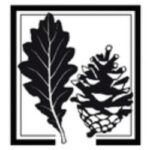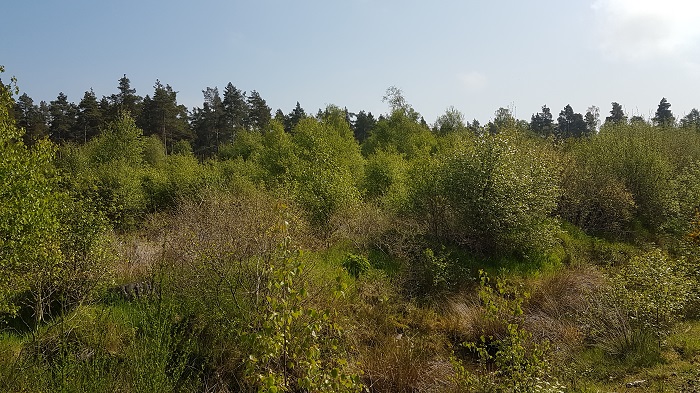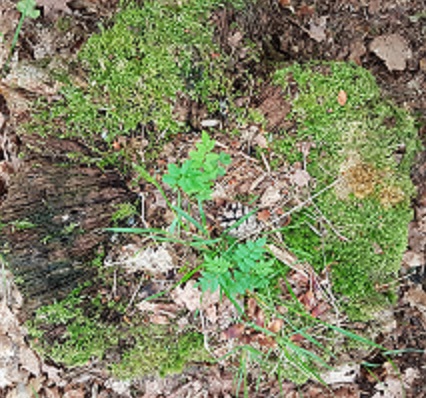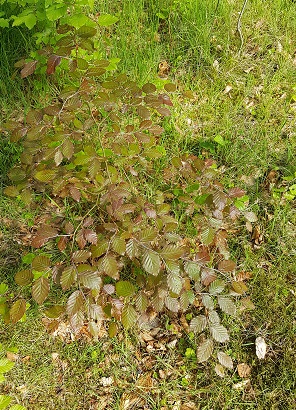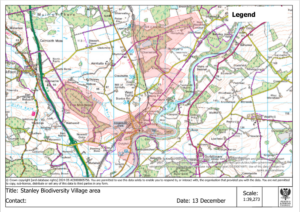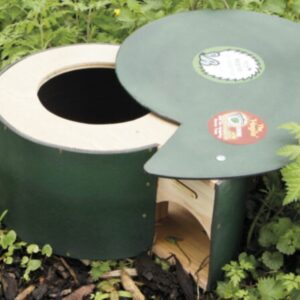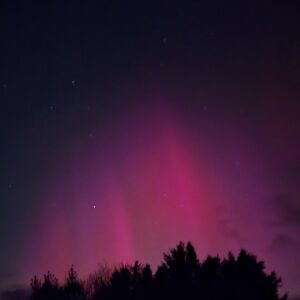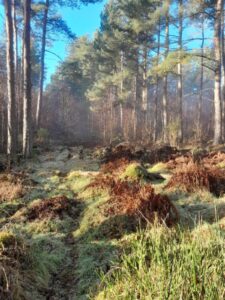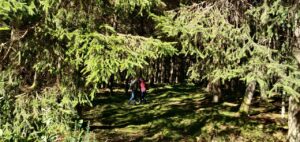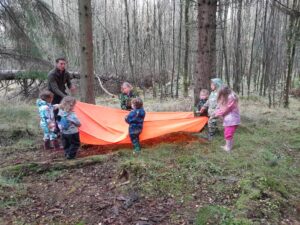A close inspection did not reveal who made the holes, nor what was living in them, but “invertebrates” I thought, are the gift of the woods.
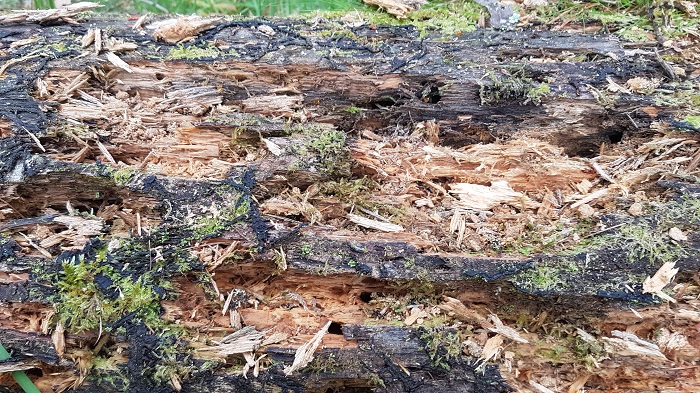
Five Mile Wood has no shortage of fallen timber, stumps and standing dead wood, and invertebrates, from wood-boring beetles to the ants revealed by moving a section of mashed wood (who refused to stay still and pose for a photograph) are constantly processing all this material. The term is detrivores – eaters of detritus. They demolish it, digest it, live in it, reproduce in it and become prey for larger animals such as woodpeckers, who continue the process.
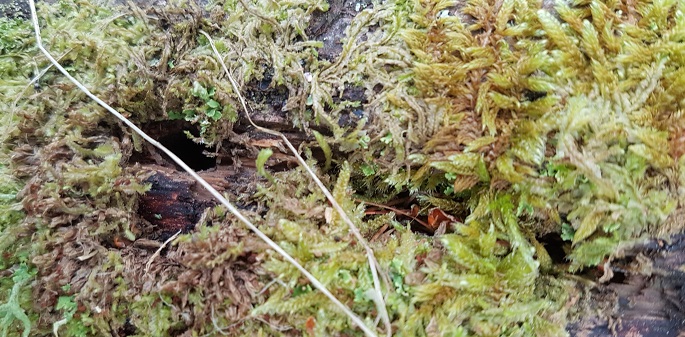
They do all this in conjunction with primitive plants such as algae, liverworts, lichens and mosses, who use rain and weather to colonise the rotting wood, and turn every stump into an unimaginably beautiful and complex micro-universe – ever-changing, adapting, a garden busy with life and death. The death of a slug grazing on algae on a log creates nutrients for more life to form. Do not forget the fungi, those other agents of decomposition, active undetected within the wood, until you notice the rhizomorphs – black strands of fungal hyphae lurking under the shattered bark – or the curious buttons that will turn into this season’s fruiting bodies.
Fungi attract more invertebrates – like the slugs I found breakfasting forensically on an early toadstool and who did stay still enough to be recorded. As huge fruiting bodies break down, more life teems to populate their remains.
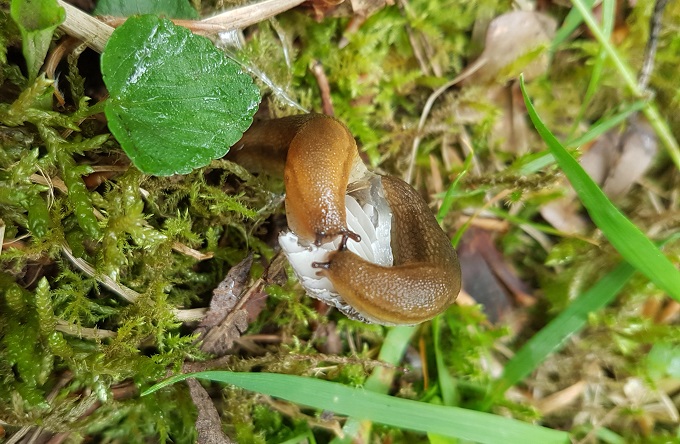
Such beauty in the process of decomposition! The parts we can see – trails of bark beetles, the subtle colouration of heartwood from fungal incursion, the mystery of camouflaged holes and the patterns of the obvious ones! And the wonder, the glory, withheld in the bits we cannot see…..
I emerged very satisfied, through mud and ditch, under and over fallen trees, onto the path in the “Gap Site” centre of the wood, which tingled with birdsong. What gap site? There are clearly no gaps here, bar the path itself. I couldn’t believe how tall the regenerating birches and willows are now, how golden the gorse, how vibrant with life it was.
No one has planted it, yet here is an exuberant young wood romping through the processes of succession and change, home to plants and animals we may never see. I belong to a number of on- and offline groups which are either about rewilding, or in which rewilding is an important topic of conversation. The question – and the challenge – is this: Is rewilding something that happens, or something you do? It’s a question that incurs endless debate, even argument, among people who essentially all want nature to succeed. A lot of disagreement ranges around whether gorse is “good” or “bad” or whether it’s just gorse. Should we graft our values onto other species? Are we in control – should we be? Do we try to manipulate nature to give us the kind of rewilding we want? If we don’t, is this a cop-out, allowing invasive, non-natives such as Giant Hogweed to predominate? Will we end up drowning in Rhododendron ponticum, effectively smothering plant diversity and devastating the range of animal species? Do we plant our preferred species now, or wait for natural succession to see them “arrive”?
Take the “Gap Site”. Here’s a wee Rowan tree – how good is that! But shall we pull out this alien copper beech sapling nearby? Or maybe all the beeches, after all, they’re not native to Scotland! Here’s a nice Scots Pine. But oh dear, the self-sown spruces by the path are a menace; we don’t want another plantation….do we? Do we want the gorse and larch saplings to create an interesting tunnel-like avenue as we come out of the gap into mature woodland? Is it pretty? Does it need to be?
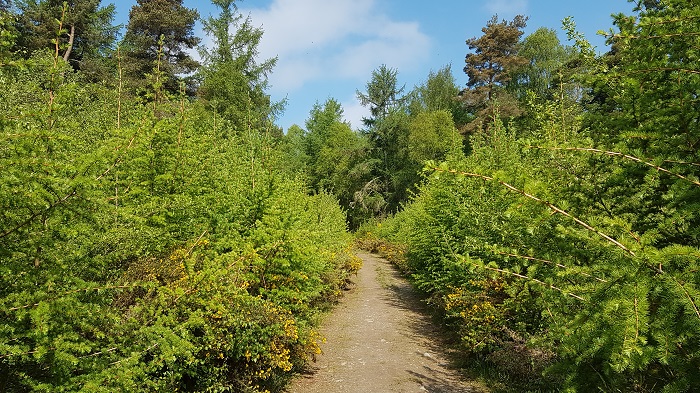
I don’t have answers to this challenge and am as conflicted as the next person. But I do believe that we all need to be aware of the question and hold it in our minds when we think about the future of our woodlands.
